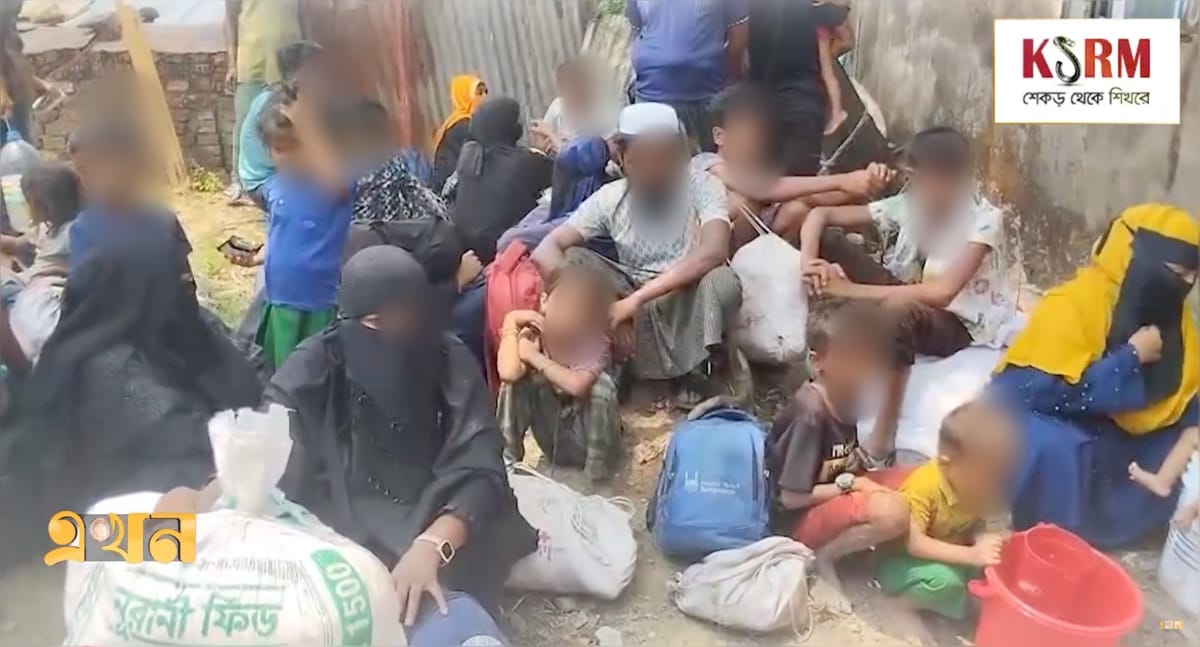On 12 May 2025, Bhatiary beach in Sitakunda became the latest landing‑spot for Rohingya trying to escape Bhasan Char. The head‑count depends on which newsroom you read - 45 people according to The Daily Star, 30 in The Business Standard and 40 in the state wire BSS - but every version agrees that women and at least twenty children were in the group and that police are already sending them back to the island.
What is striking is who made the “arrest.” Villagers and ship‑breaking‑yard guards confronted the exhausted refugees, held them inside the yard, then rang Sitakunda police. This incident is part of a recurring pattern where Rohingya attempting to leave Bhasan Char are intercepted by local communities.
The Rohingya told reporters that 3 trawlers had set sail from Bhasan Char. One trawler developed engine trouble and ended up on the mainland. Officers say the escapees paid brokers for the boat ride and insist the operation “rescued trafficking victims,” but in practice it is a community handover that ends in forced return to Bhasan Char.
This pattern has roots. Dhaka’s messaging casts escapees as either prey for traffickers or a security threat. At the same time, aid cuts and perceived job competition have frayed local goodwill; the Refugee Relief and Repatriation Commissioner himself reinforced the messaging last year, saying that “hospitality has turned into hostility.” Thus, for shoreline communities, detaining potentially dangerous “illegals” can feel like a civic duty.
The people of Bangladesh certainly will not welcome any more Rohingya here. Hospitality in the host community has turned into hostility. In this context, there is nothing much we can do for the newly displaced (Rohingya from Myanmar).” - Mizanur Rahman
Policing on Bhasan Char is already marred by extortion and arbitrary arrest. Community arrests, conducted without due process, compound these violations.
These escalating pushbacks on the ground stand in stark contrast to the official promises made nearly four years ago. In October 2021, the Bangladeshi government and UNHCR signed a Memorandum of Understanding covering humanitarian work on Bhasan Char. UN spokespeople said the deal would provide protection, education and health services on the island. At its launch, UNHCR’s country head Johannes van der Klaauw stressed that any further transfers must be “informed and voluntary” and that refugees would be able to “move back and forth” to the mainland once a supervised permit scheme was in place.
Rights monitors were far less sanguine. Fortify Rights obtained a leaked copy of the MoU and pointed out that section 2(g) in fact limits departures to case‑by‑case permits approved jointly by Dhaka and UNHCR, warning that the unpublished text “codifies restrictions on freedom of movement.” A Reuters analysis of the same leak likewise concluded that the agreement offered “no guarantees of free movement” for Rohingya on the island.
Less than six weeks later Human Rights Watch said the MoU could not justify “forced relocations” and urged donors to insist on real freedom of movement before any more transfers took place. HRW’s earlier 58‑page report - tellingly titled “An Island Jail in the Middle of the Sea” - had already documented how onerous security checks and a string of permissions, even for medical emergencies, made leaving Bhasan Char “effectively impossible” for most residents.
Nearly four years on, the gap between promise and practice is glaring. The supervised travel‑pass system Johannes envisaged is Kafkaesque - layers of red tape, unclear criteria, and the ever-present need for unofficial payments. See below. Fortify Rights’ warning about hidden restriction clauses remains unanswered, and HRW still describes Bhasan Char as a de facto place of detention.
Each time villagers hand escapees back to the police they expose how little of the 2021 commitment to truly voluntary, rights‑based movement has been honoured.
To understand what "voluntary" movement actually looks like in practice, I asked a Rohingya resident of Bhasan Char to describe the process for seeking permission to visit the mainland camps. This is what he wrote:
If a Rohingya wishes to visit the Ukhiya camp, they must first prepare a draft application. This draft is usually typed at a local computer shop and must include a passport‑sized photograph of each person who intends to travel. Preparing the draft typically costs about 100–150 taka.
The draft is addressed to the CIC (Camp‑in‑Charge) but is submitted to the NSI (National Security Intelligence) office. After receiving the application, the NSI office issues the applicant with a serial number and instructs them to return on a specified date - usually 20 to 25 days after submission.
During this time, NSI officers conduct an investigation into the applicant, looking at:
- Whether they are involved in any financial transactions;
- Whether they engage in illegal activities
- How many times have they previously travelled from Bhasan Char;
- How likely they are to return after the trip.
Maintaining a good relationship with the head focal person is crucial. In many cases, applicants secretly pay this individual a bribe for assistance; otherwise, he may not give a favourable opinion, causing the permit process to stall.
Once the investigation is complete, the applicant must return to the NSI office on the appointed date. There, the NSI authorities place their seal and signature on the application. The application is then approved by the CiC.

